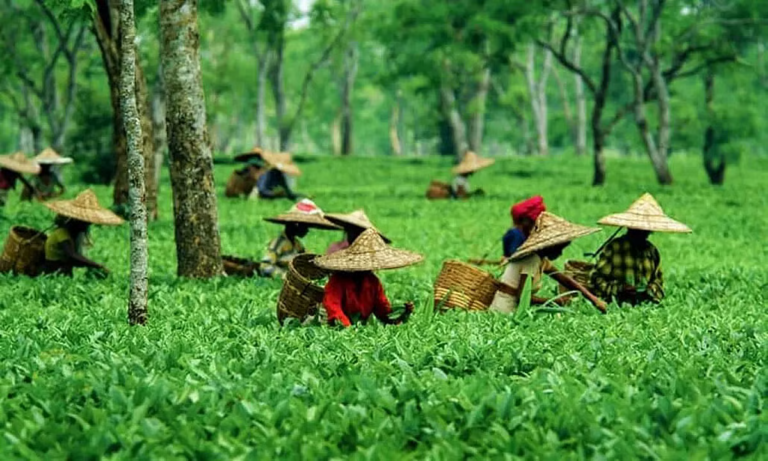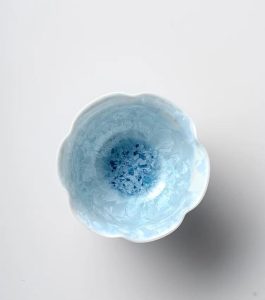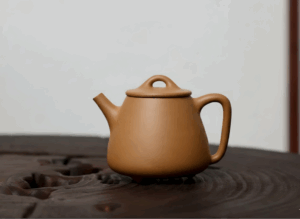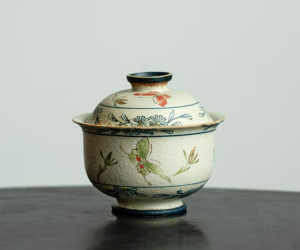
In the vast world of Pu-erh tea, there exists a mysterious, highly concentrated substance known as Tea Resin, or Cha Gao (茶膏). Once reserved only for emperors and high-ranking officials, Tea Resin represents the ultimate pursuit of tea essence.
If you are drawn to the history, convenience, and potent flavour of this concentrated form of tea, this guide will walk you through its origins and help you understand the crucial considerations for selecting a high-quality, authentic daily brew.
The Mystical Origin and Imperial Status of Tea Resin
Tea Resin is more than just a beverage; it is a piece of history. Its very existence is steeped in the ancient desire for portable, potent tea.
A Royal and Medicinal Past
While rudimentary forms of tea paste appeared as early as the Tang Dynasty (618–907 AD), the meticulous process for making Pu-erh Tea Resin was truly perfected during the Qing Dynasty (1644–1911 AD).
- Imperial Status: Tea Resin was so prized that it became an exclusive imperial tribute (贡品). Records show that emperors like Yongzheng and Qianlong were captivated by it, leading to the development of elaborate, secret palace recipes (sometimes numbering over 186 steps). The concentrated blocks were easily transportable and served as a crucial strategic commodity, even being sent as state gifts (国礼) to foreign dignitaries.
- Healing Power: Historically, Tea Resin was also valued for its medicinal properties. The Qing dynasty physician Zhao Xuemin wrote in the Compendium of Materia Medica Supplement that Tea Resin “cures a hundred ailments, is best for sobering up, aids digestion, resolves phlegm, and clears the stomach.”
The Price of Essence: Process and Scarcity
The extreme value of Tea Resin comes directly from its complex, time-consuming production.
The traditional process involves boiling tea leaves (or fragments and stems), filtering the liquid multiple times to remove all solids, and then slowly simmering (熬制) the essence for days until it reduces to a thick, pitch-like paste. This paste is then solidified into small pellets or blocks.
The Cost of Concentration: The process is highly inefficient: roughly 1 kg of raw maocha (毛茶) yields only about 0.2 to 0.25 kg of Tea Resin. This extreme scarcity is why it has always been a luxury item. Modern auctions only reinforce this, with even small amounts of Qing Dynasty Tea Resin fetching five-figure prices.
Tea Resin historical development
Tang Dynasty: Initial concept (tea with “cream/paste”) noted by Lu Yu in The Classic of Tea.
Song Dynasty: Formal making processes begin to be recorded.
Ming Dynasty: Tea paste tradition temporarily vanishes after imperial decree against compressed tea.
Qing Dynasty: Pu-erh Tea Resin perfected, reaching its peak quality as an imperial tribute and medicinal product.
Tea Resin’s Unique Advantages: Convenience and Purity

For many, a high-quality Tea Resin offers unmatched benefits:
- Ultimate Convenience: It is often described as simpler than a tea bag. The pellet dissolves directly in the cup, leaving zero tea residue and requiring no teaware or straining. It is the perfect instant tea.
- Highly Concentrated Flavour: Because it is pure essence, the flavour is intense and potent. One small pellet can easily brew a large mug (500ml or 16oz) of strong, smooth tea.
The Necessary Consideration: Quality and Trust
While the history and convenience of Tea Resin are compelling, its concentrated nature necessitates an important quality consideration.
Excellent Tea Resin made from high-grade, whole leaf tea is a true delicacy. However, because the final product is a solid, dissolved liquid, it is impossible to visually confirm the raw material used in its creation.
The Risk: Due to the processing method, some producers may unfortunately use lower-quality tea material (such as fragments, dust, or stems) to produce their resin. When consuming a concentrated essence, it becomes difficult for the consumer to determine if the flavour and quality truly stem from premium leaves or merely the concentrated extract of inferior tea.
Lao Cha Tou: The Solution for Whole-Leaf Quality and Convenience

If you want a highly convenient tea that retains the integrity of the whole tea leaf and offers assurance of quality, look no further than Lao Cha Tou (老茶头).
A Natural and Authentic Alternative
Unlike Tea Resin, which is artificially extracted and concentrated, Lao Cha Tou is a natural formation. It is the clump of tea leaves that naturally binds together during the fermentation process of ripe Pu-erh tea.
Lao Cha Tou offers a solution that balances flavour, convenience, and quality assurance:
- Visible Quality: As a naturally formed cluster of complete tea leaves, you can visually inspect the product, offering greater transparency about the raw material.
- Exceptional Flavour: These nuggets boast a rich, smooth, and full-bodied flavour profile. They are known for a thick, viscous mouthfeel, supreme smoothness on the throat, and distinct notes of dried date and natural sweetness (枣香).
- Perfect for Grandpa Style Brewing: The dense structure of Lao Cha Tou makes it extremely durable (耐泡), easily lasting for 13+ infusions. This resistance to over-steeping makes it the perfect choice for Grandpa Style Brewing—toss it in your mug and just keep topping up the water throughout the day.
If you enjoy the convenience of Tea Resin but want the assured quality and full flavour of whole tea leaves, Lao Cha Tou is the superior daily choice.
👉 [Explore our in-depth article on this hidden gem here: Lao Cha Tou: The Hidden Gem of Pu Erh Tea]
Tea Resin vs. Lao Cha Tou: How to Choose Your Convenient Tea
| Feature Comparison | Tea Resin (Cha Gao) | Lao Cha Tou (老茶头) |
| Final Form | Solid concentrated essence (no tea fibers). | Natural clumps of whole tea leaves. |
| Manufacturing | Artificial boiling, extraction, and filtration (deeply processed). | Natural fermentation, naturally binding. |
| Quality Assurance | Difficult to judge raw material quality once concentrated (risk of using inferior fragments). | Visible leaves and form, providing better assurance of the raw material. |
| Infusion Power | Extremely fast dissolving, zero residue. | Extremely durable (13+ infusions), perfect for Grandpa Style Brewing. |
| Best For | Collectors, extreme concentration, or pursuit of a zero-residue brew. | Daily consumption, natural quality, and long-lasting flavour. |
However, for those seeking a highly convenient, long-lasting daily tea that is built upon the integrity of the whole tea leaf and offers the incredible flavour profile of a naturally aged Pu-erh, Lao Cha Tou is the better choice.
Why compromise on quality for convenience? You can have both.
Ready to try the natural convenience and rich flavour of Lao Cha Tou?
Frequently Asked Questions (FAQ)
Tea Resin is a highly concentrated essence of tea, typically Pu-erh. It is created by boiling, filtering, and simmering the tea liquid until it forms a solid, soluble paste or pellet.
ea Resin was valued due to its extreme scarcity (low yield from raw tea), its medicinal reputation (as recorded in Bencao Gangmu), and its status as an exclusive imperial tribute (贡品) during the Qing Dynasty.
Yes, absolutely. Lao Cha Tou’s dense structure makes it extremely durable (耐泡), resisting bitterness even with long steeping times. It is considered a perfect choice for the Grandpa Style Brewing method.
Because Tea Resin is a concentrate, the raw material’s quality is visually obscured. There is a risk that inferior or fragmented tea material was used during the extraction process.
As Lao Cha Tou remains in the form of a natural clump of complete tea leaves, the quality and integrity of the source material are more visible and traceable than in a concentrated extract.
Lao Cha Tou is prized for its smooth, thick, and viscous mouthfeel. It has rich notes of caramel, dried dates, and a distinct natural sweetness (枣香), with very low bitterness.
While Tea Resin is instant, Lao Cha Tou is generally better for all-day drinking. Its extreme durability (lasting 13+ infusions) allows you to enjoy consistent flavour simply by topping up your mug with hot water repeatedly.







